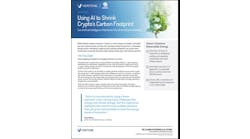Why PERC Believes Propane Should Be a Part of Your Decarbonization Plan
Hydrogen may have a long way to go before it lives up to its billing as the fuel of the future, but, according to Jim Bunesy, we already have a hydrogen-rich, lower carbon fuel source that’s readily available and easily transported. That fuel is propane.
Bunsey, the director of communications and business development for the Propane Energy Resource Council (PERC), recently sat down with Rod Walton, managing editor of Microgrid Knowledge, to discuss how propane can help the U.S. reach its decarbonization goals.
Lower carbon intensity
According to Bunsey, the majority of the propane used in the U.S. is produced domestically and it’s significantly cleaner than other fuels.
“The carbon intensity of domestic propane is about 79,” Bunsey said. “Right now, [propane is] cleaner than the national average of the grid,” which he said has a carbon intensity of 131.
When you consider renewable propane, which can be made from plant material, food waste, recyclable plastics and other materials, Bunsey told Walton that propane’s carbon picture looks even better.
The renewable propane the industry has shipped to California over the last five years has a carbon intensity of just 20.5, according to Bunsey.
Renewable propane has the same chemical makeup as nonrenewable propane, which means not only is it cleaner, but it’s future-proof. Propane-powered equipment purchased today, such as generators and forklifts, can also use renewable propane, which Bunsey said will become more widely available in the next few years.
“We're projecting by 2024 to have 120 million gallons, and by 2030 we should have over a billion gallons available of renewable propane as we start to bring on more refineries,” he said.
Infrastructure is already in place
Bunsey highlighted other benefits of propane that can aid in the decarbonization of business and industry. Propane doesn't break down in storage like gasoline or diesel fuels, he said, and there is a well-established infrastructure to move the fuel to where it’s needed.
“We can move it from port to port. We can move it from state to state. We have the rail. We have trucking. We have barges,” Bunsey said.
“Hydrogen's going to follow behind us,” he added, “but they’ve got a lot of work to get that infrastructure built. But for somebody right now that needs to meet their energy goals, propane gives them a wide path to zero carbon emissions.”
Track news about microgrids by subscribing to the free Microgrid Knowledge newsletter








